What is an AI Robot and How Does it Work?
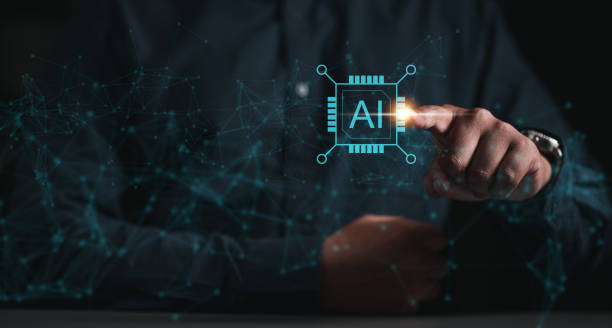
In today’s world, the term #Artificial_Intelligence or Artificial Intelligence (AI) is frequently heard.
One of the prominent manifestations of this technology is the artificial intelligence robot.
But what exactly is an AI robot? Simply put, an AI robot is an intelligent agent capable of understanding its surroundings, reasoning, learning, and making decisions.
These robots use complex algorithms and vast amounts of data to try and mimic human behavior and perform various tasks automatically.
The way an AI robot works depends on its type and application.
However, generally, these robots collect information from the environment through sensors.
This information is then processed by AI algorithms, and based on it, the robot makes decisions and performs appropriate actions.
For example, an AI robot working in a factory can identify defective parts using cameras and sensors and remove them from the production line.
Machine learning is one of the most important components of an AI robot.
Using this technique, the robot can improve its performance over time and through its experiences.
In other words, an AI robot is constantly learning and adapting to new conditions.
How much does losing business leads due to an unprofessional website cost you? Solve this problem forever with a professional corporate website design by RasawWeb!
✅ Increase credibility and trust of potential customers
✅ Easier attraction of new business leads
⚡ Get a free consultation now!
Types of AI Robots: Applications and Features

AI robots are divided into different types based on their application and level of intelligence.
One of these classifications is based on cognitive abilities.
Narrow AI robots are only capable of performing a specific task.
General AI robots have the ability to perform any task a human can.
Super AI robots possess intelligence beyond human capability.
In terms of application, AI robots are also used in various fields.
In industry, these robots are used for automating production lines, quality control, and performing dangerous tasks.
In medicine, AI robots assist doctors in diagnosing diseases, performing precise surgeries, and caring for patients.
In customer services, AI robots act as chatbots, answering customer questions and providing support services.
One of the important features of AI robots is their adaptability to the environment.
These robots can adjust their performance in different conditions and carry out their tasks in the best possible way.
Additionally, AI robots are capable of working 24/7 without fatigue, which increases productivity and reduces costs.
Advantages and Disadvantages of Using AI Robots
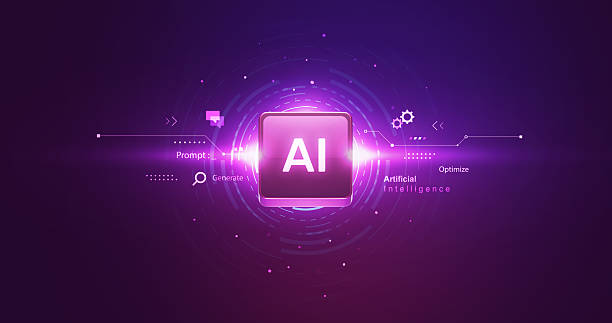
The use of AI robots offers numerous advantages, including increased speed and accuracy in task performance, cost reduction, improved product and service quality, and the ability to perform dangerous tasks.
AI robots can process large volumes of data in a short time and identify patterns that are not discernible to humans.
This can contribute to improved decision-making and increased productivity.
However, the use of AI robots also has disadvantages.
One of the most important disadvantages is the concern about job displacement.
With task automation, many jobs are replaced by robots, which can lead to increased unemployment.
Furthermore, AI robots may make errors and incorrect decisions, leading to financial and personal losses.
In addition, ethical issues are also raised in the use of AI robots.
For example, questions arise regarding the accountability of robots in case of errors and bias in AI algorithms.
To use AI robots responsibly, these issues must be considered, and solutions must be provided to address them.
| Advantages | Disadvantages |
|---|---|
| Increased speed and accuracy | Job displacement |
| Reduced costs | Potential for error |
| Improved quality | Ethical issues |
What to Expect from the Future of AI Robots?

The future of AI robots is very bright and full of potential.
With the continuous advancement of technology, these robots are expected to play a more prominent role in our lives.
In the future, AI robots can bring fundamental changes in various fields such as education, healthcare, transportation, and manufacturing.
For example, in education, AI robots can act as private tutors, helping students learn more effectively.
In healthcare, AI robots can assist doctors in diagnosing diseases, performing precise surgeries, and caring for patients.
In transportation, AI robots can control self-driving cars, leading to a reduction in accidents and improved traffic flow.
However, to realize this potential, existing challenges must be addressed, and the responsible development of AI robots must be ensured.
Attention must be paid to ethical issues, privacy protection, and preventing discrimination in AI algorithms.
Does your current website adequately represent your brand’s credibility? Or does it drive away potential customers?
RasawWeb, with years of experience in designing professional corporate websites, is your comprehensive solution.
✅ A modern, beautiful website tailored to your brand identity
✅ Significant increase in lead generation and new customers
⚡ Contact RasawWeb now for a free corporate website design consultation!
How to Build an AI Robot? Step-by-Step
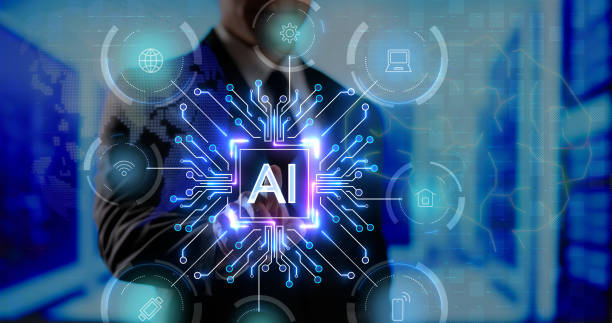
Building an AI robot is a complex, multi-stage process that requires diverse knowledge and skills.
However, by following a step-by-step approach, this process can be simplified.
The first step is to define the purpose of building the AI robot.
You must specify what task your robot will perform and what problems it will solve.
After defining the purpose, you need to collect the necessary data to train the robot.
An AI robot requires a large volume of data to learn and improve its performance.
This data can include images, sounds, texts, or any other type of data relevant to the robot’s task.
Next, you need to choose an appropriate AI algorithm and train it on the collected data.
There are various algorithms for artificial intelligence, each suitable for a specific type of task.
After training the algorithm, you must test it and evaluate its performance.
If the robot’s performance is not satisfactory, you should retrain the algorithm or choose another one.
Key Technologies in the Development of AI Robots
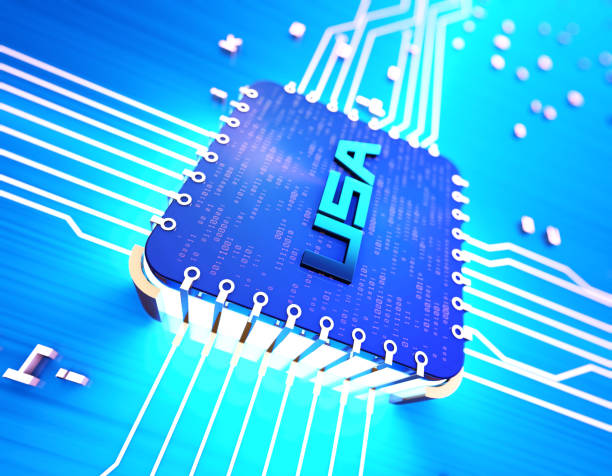
The development of AI robots depends on various technologies.
Machine learning, natural language processing, computer vision, and robotics are among the most important of these technologies.
Machine learning enables the AI robot to learn from data and improve its performance.
Natural language processing allows the robot to understand human language and interact with humans.
Computer vision enables the robot to see and analyze images.
Robotics also helps in the physical construction and control of robots.
By combining these technologies, powerful AI robots capable of performing various tasks can be built.
In addition, advanced hardware also plays a significant role in the development of AI robots.
Powerful processors, precise sensors, and high-capacity batteries are among the most important hardware components required for building AI robots.
AI Robots in Iran: Challenges and Opportunities

Iran, like other countries worldwide, is developing AI robots.
However, the development of this technology in Iran comes with challenges and opportunities.
One of the most significant challenges is the shortage of specialized workforce in the field of artificial intelligence.
For the development of AI robots, engineers, scientists, and researchers with the necessary knowledge and skills in this field are needed.
Another challenge is the lack of investment in this area.
The development of AI robots requires significant investment.
The government and the private sector must invest in this field to enable the development of this technology in Iran.
However, Iran has many opportunities for the development of AI robots.
The existence of reputable universities and talented students has created high potential for the development of this technology in Iran.
Furthermore, the demand for AI robots in various Iranian industries creates a suitable opportunity for the development of this technology.
Given these opportunities and challenges, a precise plan for the development of AI robots in Iran must be implemented.
| Challenges | Opportunities |
|---|---|
| Shortage of specialized workforce | Presence of reputable universities |
| Lack of investment | Demand for robots in industries |
Ethical Issues Surrounding AI Robots: What Should Be Done?
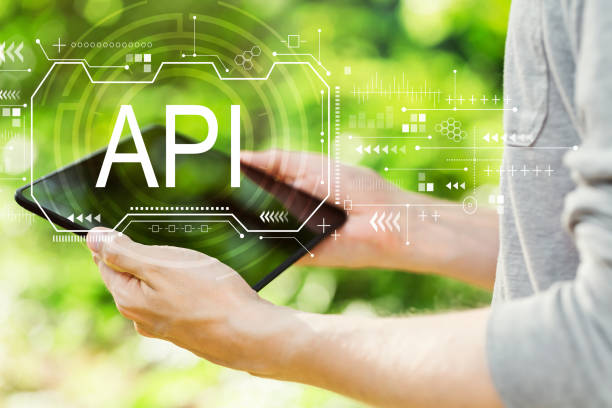
The development of AI robots raises important ethical issues that must be addressed.
One of the most important issues is the accountability of robots in case of errors.
If an AI robot makes an incorrect decision leading to damage, who will be responsible? The robot’s manufacturer, the robot’s user, or the robot itself?
Another ethical issue is bias in AI algorithms.
If an AI algorithm is trained on biased data, it may make discriminatory decisions.
For example, an AI algorithm used for hiring might prefer individuals of a particular race or gender.
To prevent these issues, AI algorithms must be carefully designed and trained with diverse data.
Privacy protection is another important ethical issue in the use of AI robots.
AI robots typically collect a lot of information about their users.
It must be ensured that this information is properly protected and not misused.
Are you falling behind in the competition with large online stores?
RasawWeb makes your business online with professional e-commerce website design and increases your market share!
✅ Increase brand credibility and customer trust
✅ Easy shopping experience leading to more sales
⚡ Act now for a free website design consultation!
Impact of AI Robots on Economy and Society

AI robots will have profound impacts on the economy and society.
These robots can lead to increased productivity, reduced costs, and improved quality of products and services.
By automating tasks, AI robots can increase production and reduce the time required to perform tasks.
This can lead to increased profitability for companies and reduced prices for products and services.
However, AI robots can also lead to job displacement.
With task automation, many jobs are replaced by robots, which can lead to increased unemployment.
To address this problem, training and empowerment programs should be provided to help individuals learn new skills and find new jobs.
In addition, AI robots can change the way social interactions occur.
With the development of AI robots capable of interacting with humans, people may interact more with robots than with other humans.
This can have positive impacts such as increased access to services and improved quality of life, but it can also have negative impacts such as reduced social connections and increased isolation.
Where Are the Learning and Training Resources for AI Robots?
![]()
If you are interested in learning and training in the field of AI robots, many resources are available to you.
Various universities and educational institutions offer courses in this field.
These courses can help you acquire the necessary knowledge and skills for developing AI robots.
In addition, many online resources are available for learning AI.
Many websites, blogs, and YouTube channels offer free tutorials in this field.
Also, many books and scientific articles on artificial intelligence are available that you can use for further learning.
To start learning AI, you can familiarize yourself with basic concepts such as machine learning, natural language processing, and computer vision.
Then you can move on to learning AI algorithms and how to implement them.
Finally, you can build your own AI robots using AI tools and libraries.
Frequently Asked Questions
| Row | Question | Answer |
|---|---|---|
| 1 | What is an AI robot? | An AI robot is a machine capable of understanding, reasoning, learning, and problem-solving, and can perform complex tasks with relative autonomy. |
| 2 | What are the most important applications of AI robots? | Key applications include industrial manufacturing, customer services (chatbots), medicine and surgery, autonomous transportation, space exploration, and military affairs. |
| 3 | What is the main difference between an AI robot and a regular robot? | A regular robot merely follows programmed instructions, whereas an AI robot can learn from data, make decisions, and adapt to new environments. |
| 4 | How do AI robots learn? | They learn by identifying patterns through machine learning algorithms (such as deep learning, reinforcement learning) and processing vast amounts of data, thereby improving their performance. |
| 5 | Can AI robots have emotions? | Currently, AI robots do not possess real emotions in the human sense. They can mimic or recognize emotions, but do not understand or experience them. |
| 6 | What are the current limitations of AI robots? | Limitations include the need for large amounts of data, inability to understand abstract concepts, lack of true creativity, ethical issues, and challenges in generalization to new environments. |
| 7 | What is the role of AI in the development of Humanoid robots? | AI helps humanoid robots to walk, maintain balance, understand their surroundings, interact with humans, and perform complex tasks. |
| 8 | How is the future of AI robots predicted? | It is predicted that AI robots will become smarter, more autonomous, and capable of performing more complex tasks in daily life and industry, and their interaction with humans will increase. |
| 9 | Can AI robots replace all human jobs? | It is unlikely that all human jobs will be replaced. Robots will take over many repetitive and dangerous tasks, but jobs requiring creativity, empathy, and ethical judgment will remain. |
| 10 | What ethical and social challenges arise with the expansion of AI robots? | Challenges include issues related to privacy, data security, ethical decision-making by robots, impact on employment, and accountability in case of errors. |
And other services of RasawWeb advertising agency in the field of advertising
- Smart UI/UX: A fast and efficient solution for online growth focusing on SEO-driven content strategy.
- Smart Website Development: Designed for businesses seeking user engagement through custom programming.
- Smart Data Analysis: A creative platform for improving user interaction with custom programming.
- Smart Direct Marketing: A new service for increasing SEO ranking improvement through SEO-driven content strategy.
- Smart UI/UX: A professional solution for increasing sales with a focus on attractive user interface design.
And over hundreds of other services in the field of internet advertising, advertising consultation, and organizational solutions
Internet Advertising | Advertising Strategy | Advertorials
Sources
Artificial Intelligence and the Future of Robotics
Applications of Artificial Intelligence in Robotics
Smart Robots: Future Development
Introduction to Types of Smart Robots
? To boost your business and gain visibility in the digital world, RasawWeb Afarin is your reliable partner. From website design with a modern user interface to comprehensive digital marketing strategies, we are by your side.
For consultation and information about our services, contact RasawWeb Afarin experts.
📍 Tehran, Mirdamad Street, next to Central Bank, Kazeroun Jonoubi Alley, Ramin Alley, No. 6

